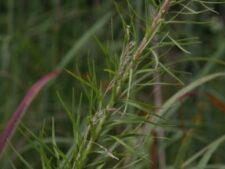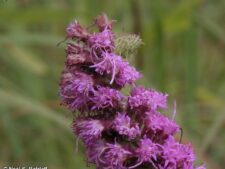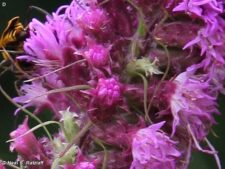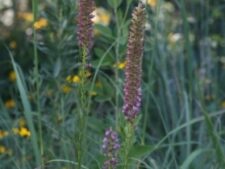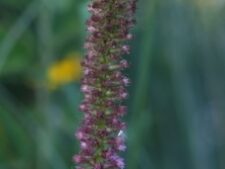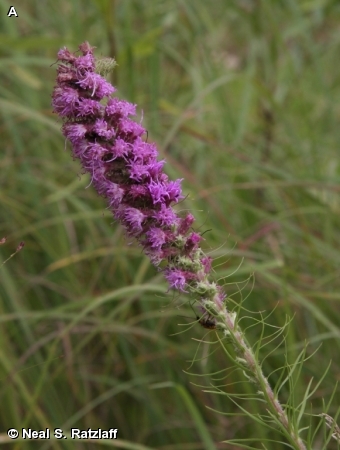
This showy, native perennial grows up to 5 feet tall. The stout stems are most often unbranched with numerous longitudinal ridges and scattered white hairs. Smooth margined, alternate, grasslike leaves are largest at the base where they may be up to 10 inches long and 1/2 inch wide. Leaves become smaller as they ascend the stem (B). The stalkless, flower heads occur in a dense spike at the top of the stem (A).Flowering begins at the tip and progresses downward (F). Each flower head is about 1/4 inch across and contains 5-12 individual pink to purple 5-lobed disk flowers with 2 protruding, threadlike, pink styles (C). At the base of each flower head is a series of overlapping, hairy, pointed bracts whose long tips curve outward (D). Plants with pure white flowers occur occasionally.
A tallgrass prairie plant common in lowland, moist prairie sites. Its natural range in Nebraska is limited to the southeast portion of the state. It is rare and introduced at Neale Woods near the pond in Jonas Valley where it was first observed in 2008, seven years after this area was seeded with a mixture that included Liatris pycnostachya (figure E). In 2009 only a single flowering stem was observed. Flowering occurs in August.
The dense, closely packed flower heads and the sharply recurved bracts are useful in distinguishing this Liatris species from our other natives. This attractive plant is a favorite of gardeners and is often used by florists in floral arrangements. The name pycnostachya is derived from the Greek meaning ‘dense’ or ‘thick’ likely a reference to the flowers and/or leaves.
The content of NatureSearch is provided by dedicated volunteer Naturalists of Fontenelle Forest who strive to provide the most accurate information available. Contributors of the images retain their copyrights. The point of contact for this page is: Neal Ratzlaff.

